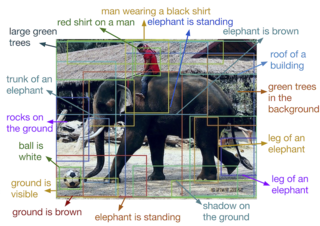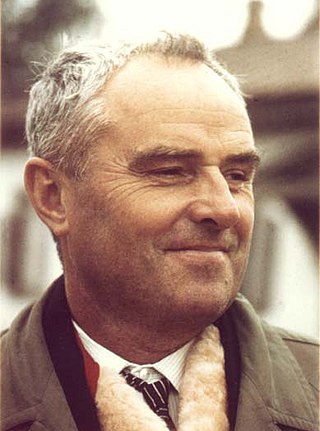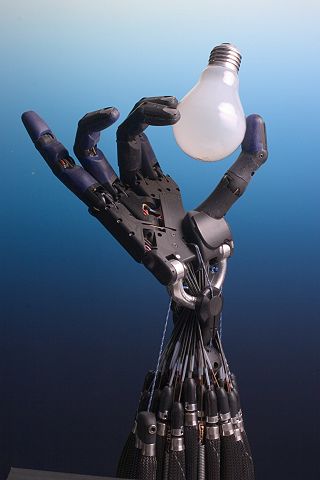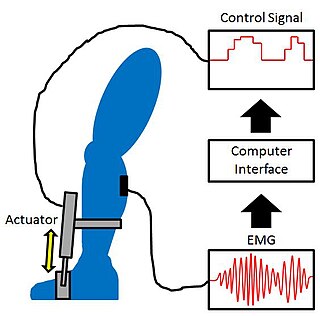Related Research Articles

Computer vision is an interdisciplinary scientific field that deals with how computers can gain high-level understanding from digital images or videos. From the perspective of engineering, it seeks to understand and automate tasks that the human visual system can do.

Gait analysis is the systematic study of animal locomotion, more specifically the study of human motion, using the eye and the brain of observers, augmented by instrumentation for measuring body movements, body mechanics, and the activity of the muscles. Gait analysis is used to assess and treat individuals with conditions affecting their ability to walk. It is also commonly used in sports biomechanics to help athletes run more efficiently and to identify posture-related or movement-related problems in people with injuries.

Crowd simulation is the process of simulating the movement of a large number of entities or characters. It is commonly used to create virtual scenes for visual media like films and video games, and is also used in crisis training, architecture and urban planning, and evacuation simulation.
Animat are artificial animals and is a contraction of animal and materials. The term includes physical robots and virtual simulations. The animat model includes features of a simple animal capable of interacting with its environment. It is, therefore, designed to simulate the ability to associate certain signals from the environment within a learning phase that indicate a potential for cognitive structure.
A voice-user interface (VUI) makes spoken human interaction with computers possible, using speech recognition to understand spoken commands and answer questions, and typically text to speech to play a reply. A voice command device is a device controlled with a voice user interface.
The following outline is provided as an overview of and topical guide to artificial intelligence:

Alexey Ivakhnenko ; was a Soviet and Ukrainian mathematician most famous for developing the Group Method of Data Handling (GMDH), a method of inductive statistical learning, for which he is sometimes referred to as the "Father of Deep Learning".
An intelligent virtual assistant (IVA) or intelligent personal assistant (IPA) is a software agent that can perform tasks or services for an individual based on commands or questions. The term "chatbot" is sometimes used to refer to virtual assistants generally or specifically accessed by online chat. In some cases, online chat programs are exclusively for entertainment purposes. Some virtual assistants are able to interpret human speech and respond via synthesized voices. Users can ask their assistants questions, control home automation devices and media playback via voice, and manage other basic tasks such as email, to-do lists, and calendars with verbal commands. A similar concept, however with differences, lays under the dialogue systems.

Robotics is the branch of technology that deals with the design, construction, operation, structural disposition, manufacture and application of robots. Robotics is related to the sciences of electronics, engineering, mechanics, and software.
Matthew Thomas Mason is an American roboticist and the former Director of the Robotics Institute at Carnegie Mellon University. Mason is a researcher in the area of robotic manipulation, and is the author of two highly cited textbooks in the field.

Robotics is an interdisciplinary branch of computer science and engineering. Robotics involves design, construction, operation, and use of robots. The goal of robotics is to design machines that can help and assist humans. Robotics integrates fields of mechanical engineering, electrical engineering, information engineering, mechatronics, electronics, bioengineering, computer engineering, control engineering, software engineering, mathematics, etc.
The following outline is provided as an overview of and topical guide to robotics:
Christopher L. 'Kit' Vaughan, DSc,, is Emeritus Professor of Biomedical Engineering in the Department of Human Biology, University of Cape Town in South Africa.

An inertial measurement unit (IMU) is an electronic device that measures and reports a body's specific force, angular rate, and sometimes the orientation of the body, using a combination of accelerometers, gyroscopes, and sometimes magnetometers. When the magnetometer is included, IMUs are referred to as IMMUs. IMUs are typically used to maneuver modern vehicles including motorcycles, missiles, aircraft, including unmanned aerial vehicles (UAVs), among many others, and spacecraft, including satellites and landers. Recent developments allow for the production of IMU-enabled GPS devices. An IMU allows a GPS receiver to work when GPS-signals are unavailable, such as in tunnels, inside buildings, or when electronic interference is present.

Software is a set of programmed instructions stored in the memory of stored-program digital computers for execution by the processor. Software is a recent development in human history, and it is fundamental to the Information Age.

Proportional myoelectric control can be used to activate robotic lower limb exoskeletons. A proportional myoelectric control system utilizes a microcontroller or computer that inputs electromyography (EMG) signals from sensors on the leg muscle(s) and then activates the corresponding joint actuator(s) proportionally to the EMG signal.
Radhika Nagpal is an American computer scientist and researcher in the fields of self-organising computer systems, biologically-inspired robotics, and biological multi-agent systems. She is the Fred Kavli Professor of Computer Science at Harvard University and the Harvard School of Engineering and Applied Sciences. She is also a Core Faculty Member of the Harvard Wyss Institute for Biologically Inspired Engineering. In 2017, Nagpal co-founded a robotics company under the name of Root Robotics. This educational company works to create many different opportunities for those unable to code to learn how.

Demetri Terzopoulos is an Academy Award winning Greek-Canadian-American computer scientist, university professor, author, and entrepreneur. He is best known for pioneering the physics-based approach to computer graphics and vision that has helped unify these two fields, and for introducing Deformable Models, among them the seminal Active Contour Models, to graphics, vision, medical imaging, and other domains; he is also known for his artificial life research on realistic animal and human modeling and simulation, encompassing musculoskeletal biomechanics, neuromuscular and neuro-sensorimotor control, and artificial intelligence. He has been a professor of computer science, electrical and computer engineering, and mathematics, and has taught courses in computer graphics, computer vision, scientific computing, and artificial intelligence/life at three universities. He is currently a Distinguished Professor and Chancellor's Professor of Computer Science in the Henry Samueli School of Engineering and Applied Science at the University of California, Los Angeles, where he directs the UCLA Computer Graphics & Vision Laboratory.

iOS 15 is the fifteenth major release of the iOS mobile operating system developed by Apple for its iPhone and iPod Touch lines of products. It was announced at the company's Worldwide Developers Conference on June 7, 2021, as the successor to iOS 14, and released to the public on September 20, 2021.
References
- 1 2 "Xiaoyuan Tu's home page". University of Toronto . Retrieved 2019-02-03.
- ↑ Shi Zhongzhi (2011). Advanced Artificial Intelligence. World Scientific. p. 580. ISBN 9789814466127.
- 1 2 3 4 "Xiaoyuan Tu - LinkedIn".
- ↑ "xiaoyuan.tu". sites.google.com. Retrieved 2019-02-01.
- ↑ Thursday, Mikey Campbell; August 13; 2015; PT, 02:40 am. "Apple invention lets iPhone owners AirDrop encrypted data to a friend's device for safekeeping". AppleInsider. Retrieved 2019-02-05.
{{cite web}}: CS1 maint: numeric names: authors list (link) - ↑ "Greater Magnetometer Mapping Accuracy Coming to iOS Devices". Patently Apple. Retrieved 2019-02-05.
- ↑ "Apple Invents a New CarPlay/HomeKit Related iDevice System". Patently Apple. Retrieved 2019-02-05.